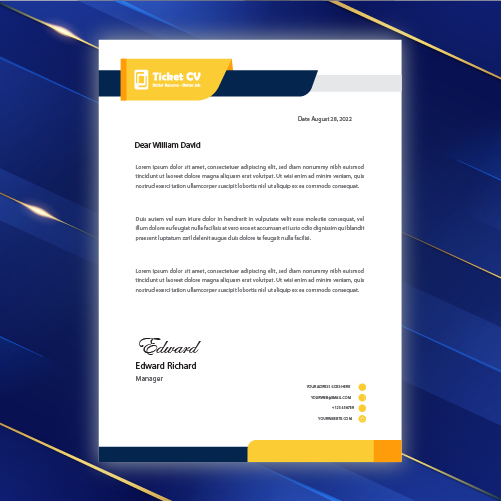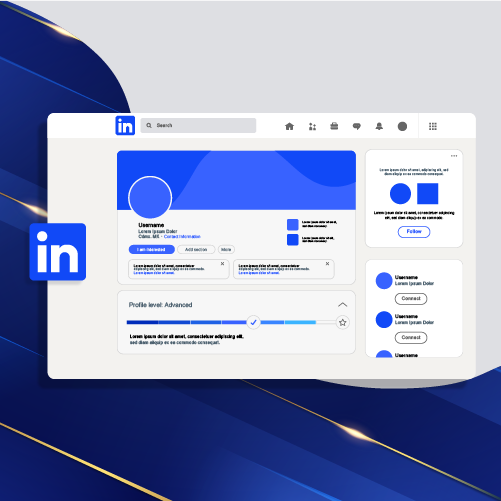High pressure situations in the office are an inevitable part of professional life, presenting both challenges and opportunities. Effectively managing stress in these moments is crucial for maintaining performance and well-being. By sharing practical steps and habits, it aims to help individuals navigate unexpected challenge at work while fostering positive outcomes. Understanding how to approach these moments can lead not only to personal growth but also to develop improved relationships with colleagues and superiors. The following list presents valuable insights into handling pressure at work by developing a habit.
Contents
ToggleUnderstanding High-Pressure Work Environments
In high-pressure work environments, identifying stress triggers is crucial for maintaining employee well-being and productivity. By recognizing specific factors that cause stress, individuals can proactively manage their response to pressure situations. For example, looming deadlines, micromanagement from a boss, or an overwhelming workload can all act as stress triggers in the workplace.
Understanding individual stress triggers enables targeted solutions to be implemented. For instance, if someone experiences anxiety due to tight deadlines, they can employ time management techniques or seek assistance from colleagues to alleviate the pressure. By identifying these triggers, employees and managers can work together to create strategies tailored to each person’s needs.
Strategies for Managing Stress
Time Management Skills
Efficient time management is crucial for handling high-pressure situations. Prioritizing tasks and setting realistic deadlines improves productivity. Mastering time management skills reduces the impact of workplace stress.
Managing time effectively allows individuals to focus on essential responsibilities, ensuring that critical tasks are completed first. By allocating specific time slots for each task, employees can maintain a structured approach to their workload, reducing the likelihood of feeling overwhelmed during crunch times. This enables them to navigate through challenging circumstances with more ease and composure.
Furthermore, effective time management fosters a sense of control over one’s workload, diminishing feelings of being swamped or unprepared when faced with demanding work scenarios.
Implementing personalized stress management techniques is beneficial in combating workplace pressure. By tailoring strategies such as deep breathing exercises or mindfulness practices to individual preferences and needs, employees can effectively alleviate anxiety and tension associated with high-stress job environments.
Proactive use of stress management techniques enhances well-being by promoting emotional resilience and mental clarity amid stressful situations at work. For instance, incorporating short meditation sessions into daily routines can significantly reduce feelings of unease or agitation when confronted with challenging tasks or tight deadlines.
Prioritization Methods
Prioritizing tasks based on urgency and importance is key in managing work pressure effectively. Using prioritization methods ensures focus on critical responsibilities while preventing procrastination habits from impeding performance during intense work periods.
Maintaining Composure and Focus
Mindfulness Practices
Incorporating mindfulness techniques is crucial for handling high-pressure situations at work. By practicing mindfulness, individuals can effectively reduce workplace stress and enhance their ability to remain focused and resilient under pressure. For example, taking short breaks for deep breathing exercises or brief meditation sessions can significantly alleviate feelings of anxiety and help maintain composure during demanding work scenarios.
Mindfulness practices also promote a calm and composed approach in the face of challenging tasks or deadlines. This allows employees to tackle their responsibilities with clarity and precision, despite experiencing heightened levels of stress. By integrating mindfulness into their daily routine, individuals can cultivate a habit of controlling their minds during stressful moments at work, ultimately contributing to improved performance even under pressure.
Emotional Control
Developing emotional control is an essential aspect of managing high-pressure scenarios in the office. Individuals who possess strong emotional intelligence are better equipped to navigate through stressful situations effectively. By understanding and regulating their emotions, employees can maintain composure while facing tight deadlines or demanding projects.
Moreover, cultivating emotional control fosters a positive work environment by promoting constructive interactions among colleagues even when faced with significant challenges. It enables professionals to handle pressure situations with grace and professionalism while avoiding unnecessary conflicts that may arise from heightened tension in the workplace.
Staying Organized
Staying organized plays a pivotal role in mitigating the impact of high-pressure situations within the office environment. Well-organized professionals are better positioned to manage their tasks efficiently during crunch times without succumbing to overwhelming stress or anxiety. For instance, maintaining a clutter-free workspace not only enhances productivity but also reduces potential sources of distraction during critical periods.
Furthermore, organizational skills contribute to effective time management, allowing individuals to allocate sufficient time for each task without feeling overwhelmed by looming deadlines or mounting workload pressures. This structured approach minimizes the disruptive effects of work pressure, enabling employees to navigate through challenging circumstances more effectively.

Developing a High-Pressure Plan
Scenario analysis plays a crucial role. By analyzing potential scenarios, individuals can prepare themselves for challenging events that may arise unexpectedly. This preparation helps in developing effective response strategies, ensuring that employees are not caught off guard when faced with intense pressure.
Conducting scenario analysis involves considering various hypothetical situations, such as tight project deadlines or unexpected obstacles. By mentally simulating these scenarios and strategizing potential responses, employees can better equip themselves to handle high-pressure events effectively. For instance, if an important client meeting is rescheduled at short notice, having already considered this possibility during scenario analysis enables employees to respond swiftly and decisively.
Furthermore, scenario analysis enhances preparedness by fostering a proactive mindset among employees. Rather than being reactive under pressure, individuals who have undergone thorough scenario analysis are more likely to anticipate challenges and take preemptive measures to address them efficiently.
Prioritizing Tasks Effectively
Task Segmentation
When handling high-pressure situations in the office, it’s crucial to segment tasks based on their urgency and importance. By breaking down work pressure into smaller, manageable tasks, individuals can maintain focus and performance. This segmentation helps in avoiding procrastination and ensures that each task receives the necessary attention.
For instance:
- Instead of viewing a large project as one overwhelming task, breaking it down into smaller components makes it more approachable.
- Segmenting tasks also allows for a clear understanding of what needs to be accomplished first, preventing feelings of being overwhelmed by multiple responsibilities at once.
Effective task segmentation provides a structured approach to tackling high-pressure situations while maintaining productivity and focus.
Deadline Management
Setting clear and achievable deadlines is essential when dealing with high-pressure situations in the office. Procrastination can hinder meeting deadlines, so addressing this promptly is vital. During crunch times, prioritizing tasks according to their urgency and impact on overall goals becomes imperative.
Consider these points:
- Setting specific deadlines for individual tasks within a project contributes to better time management.
- Addressing procrastination through effective time management techniques aids in meeting deadlines even during demanding periods.
By utilizing proper deadline management, individuals can navigate high-pressure scenarios efficiently while ensuring that all tasks are completed within the specified timeframe.
Delegation Techniques
Delegating tasks based on team members’ strengths and abilities is an effective way to handle work pressure. Sharing the workload not only prevents feeling overwhelmed but also empowers team members to contribute meaningfully towards achieving common goals. Providing clear instructions and expectations when delegating tasks fosters clarity among team members.
Here are some examples:
- Delegating routine or less critical duties frees up valuable time for focusing on urgent matters during peak work pressure.
- Trusting team members with significant responsibilities during crunch times enhances their sense of ownership over their roles within the organization.
Employing efficient delegation techniques enables individuals to manage high-pressure situations effectively by leveraging collective strengths while fostering collaboration among team members.

Overcoming Procrastination
When handling high-pressure situations in the office, employing effective motivation tactics can help individuals overcome procrastination and boost productivity. Setting clear and achievable goals is crucial to staying motivated when faced with challenging tasks. By breaking down complex projects into smaller, manageable steps, employees can maintain a sense of accomplishment as they progress through each task.
Seeking support from team members also plays a vital role in maintaining motivation during stressful times. Collaboration and encouragement within the team create an environment where individuals feel empowered to tackle demanding assignments. Focusing on the opportunity presented by these challenges rather than viewing them as insurmountable obstacles helps employees stay motivated and engaged.
Breaking Down Tasks
Prioritizing tasks based on urgency and importance is essential for managing work pressure effectively. When employees are able to identify which tasks require immediate attention, they can allocate their time efficiently and prevent feeling overwhelmed by multiple responsibilities simultaneously.
Breaking down complex tasks into smaller, manageable steps allows individuals to approach daunting projects methodically without succumbing to procrastination or anxiety. Setting specific goals and deadlines for each task provides a structured framework that minimizes the likelihood of delaying important assignments.
Delegating tasks to team members during crunch times not only lightens individual workloads but also fosters a collaborative environment where everyone contributes towards achieving common objectives.
Reward Systems
Implementing a reward system within the workplace serves as an effective strategy for motivating employees under high-pressure conditions. Recognizing outstanding performance through incentives encourages individuals to remain focused on their responsibilities despite facing challenging circumstances.
Providing opportunities for skill development and growth acts as an additional motivational factor for employees striving to excel in high-pressure situations. The promise of personal advancement often inspires individuals to surpass their own expectations while contributing positively towards organizational success.
Utilizing performance-based rewards further reinforces employee commitment towards meeting and exceeding set goals even when confronted with demanding workplace scenarios. Recognition from superiors offers emotional support while enhancing overall job satisfaction among staff members.
The Role of Breaks in Managing Pressure
Break Scheduling
Break scheduling is crucial. Planning short breaks strategically throughout the day can effectively combat procrastination and enhance job performance under pressure situations. By incorporating scheduled breaks into the workday, individuals can alleviate stress and improve their ability to handle unexpected high-pressure moments.
Taking a few minutes for a break not only provides an opportunity to recharge but also helps in regaining focus during intense work periods. This simple strategy can significantly reduce anxiety, allowing employees to approach tasks with renewed vigor and control over their performance. When managers encourage break scheduling, they create an environment that supports employees in managing pressure situations, ultimately leading to improved productivity and job satisfaction.
Relaxation Activities
Engaging in relaxation activities is another effective way to handle high-pressure situations at work. Simple practices such as deep breathing exercises, stretching, or taking short walks can help alleviate anxiety and stress during demanding work pressure circumstances. These activities provide individuals with valuable moments of respite from the intensity of their tasks, enabling them to return with improved focus and clarity.
Furthermore, practicing mindfulness for just a few minutes each day has been proven to enhance one’s ability to manage pressure situations effectively. Whether it’s through meditation or listening to calming music, these relaxation techniques equip individuals with the tools needed to navigate high-pressure moments at work while maintaining composure and optimal performance.
Physical Exercise
Regular physical exercise plays a significant role in reducing stress and anxiety within the workplace. Incorporating exercise into daily routines not only enhances overall well-being but also improves one’s capacity to handle high-pressure situations effectively. By engaging in physical activity regularly, individuals are better equipped to combat procrastination while staying focused on their tasks.
Moreover, exercise positively impacts individual performance and productivity at work by promoting mental clarity and emotional resilience necessary for tackling challenging projects under tight deadlines.
Simplifying Complex Tasks
Task Analysis
Analyzing tasks is crucial for managing high-pressure situations at work. It involves breaking down complex tasks into smaller, manageable steps. By doing this, individuals can develop a clear plan to improve performance under pressure. Task analysis also helps in identifying goals and prioritizing work during crunch times, enabling employees to overcome procrastination and stay focused on the job at hand.
Task analysis is an essential tool for handling work pressure effectively. For example, when faced with a tight deadline, breaking down a project into specific tasks with set time limits for each task allows individuals to approach their work methodically. This approach not only reduces feelings of being overwhelmed but also ensures that urgent and important tasks are completed first.
Process Streamlining
Streamlining processes is another effective way of dealing with high-pressure situations in the office. Identifying key tasks under pressure and creating a streamlined plan to tackle them can significantly reduce stress levels while maintaining productivity. Prioritizing and focusing on essential job responsibilities enables employees to manage their workload more effectively during challenging times.
For instance, if an employee is handling multiple projects simultaneously, they can streamline the process by using time management techniques such as setting aside dedicated blocks of time for each project or utilizing tools like priority matrices to determine which tasks require immediate attention.
Automation Tools
Utilizing automation tools plays a vital role in managing high-pressure situations at work by reducing repetitive tasks’ burden on employees. These tools enable individuals to take control of their workload efficiently while freeing up time for strategic initiatives or critical decision-making processes.
For example, email automation software can be used to schedule and send routine emails without manual intervention, allowing employees to focus on pressing matters without neglecting ongoing communication needs.

Enhancing Team Communication Skills
Active Listening
Active listening is crucial in handling high-pressure situations at work. It allows individuals to focus on the speaker’s message, improving their ability to understand and respond effectively to work pressure. By developing active listening as a habit, employees can stay present and in control during challenging moments. For example, when a team member expresses feeling overwhelmed by tight deadlines, actively listening and acknowledging their concerns can help alleviate the pressure they are experiencing.
Moreover, active listening enhances overall performance by ensuring that everyone feels heard and understood. This skill enables team members to communicate more effectively under stress, leading to better problem-solving and decision-making. When faced with a demanding project or task deadline, utilizing active listening techniques can facilitate smoother collaboration among team members.
Feedback Mechanisms
Establishing clear communication channels for receiving and giving feedback is essential for managing work pressure effectively within a team. Regular feedback sessions provide an opportunity for employees to discuss challenges they face when working under pressure while also receiving constructive input on how they can improve their performance in such situations.
Encouraging open dialogue helps address concerns promptly before they escalate into larger issues affecting teamwork or individual well-being. For instance, if an employee struggles with managing multiple tasks simultaneously due to work pressure, having regular performance reviews can identify areas where additional support or resources may be necessary.
Conflict Resolution
Proactively addressing conflicts within the workplace is vital for preventing unnecessary escalation of tension amid high-pressure scenarios. Utilizing effective communication strategies not only resolves disputes but also ensures that all parties involved feel heard and respected despite the challenging circumstances.
Implementing stress management strategies contributes significantly towards maintaining productivity levels during high-pressure periods at work. Encouraging mindfulness practices or providing access to professional assistance for stress management demonstrates an organization’s commitment to supporting its employees’ well-being amidst demanding work environments.
Conclusion
In high-pressure work environments, managing stress and maintaining composure are crucial for success. By prioritizing tasks, overcoming procrastination, and simplifying complex tasks, individuals can navigate these challenges effectively. Developing a high-pressure plan and enhancing team communication skills are essential for thriving in such environments. Taking regular breaks also plays a significant role in managing pressure and promoting mental well-being.
To handle high-pressure situations in the office, individuals should implement the strategies discussed in this article. By understanding the nature of high-pressure work environments and utilizing effective stress management techniques, individuals can not only survive but also thrive in demanding professional settings. It’s essential to prioritize self-care and seek support when needed to ensure long-term success and well-being in high-pressure work environments.
Frequently Asked Questions
How can someone effectively manage stress in a high-pressure work environment?
To manage stress in a high-pressure work environment, it’s essential to prioritize tasks, take regular breaks, communicate with the team effectively, and develop a plan for handling pressure situations. Maintaining composure and focus plays a crucial role in managing stress.
What are some effective strategies for maintaining composure and focus during high-pressure situations at the office?
Strategies for maintaining composure and focus include deep breathing exercises, positive self-talk, breaking down complex tasks into smaller steps, setting realistic goals, and practicing mindfulness techniques. It’s also important to maintain a healthy work-life balance to support mental well-being.
How can one develop an effective plan specifically tailored for handling high-pressure situations in the office?
Developing an effective plan involves identifying potential pressure points or stressful scenarios that may arise in the workplace. Creating actionable steps to address these situations proactively is essential. This may involve delegating tasks efficiently, setting clear timelines, and having contingency plans in place.
What role do breaks play in managing pressure at work?
Taking regular breaks is crucial for managing pressure at work as it allows individuals to recharge both mentally and physically. Short breaks help prevent burnout while enhancing productivity by providing moments of relaxation amidst demanding tasks.
How can team communication skills be enhanced to better navigate high-pressure environments?
Enhancing team communication involves fostering open dialogue among team members regarding workload distribution, sharing concerns about deadlines or challenges faced due to pressure situations. Encouraging transparent communication helps build trust within the team and enables collective problem-solving when under pressure.












